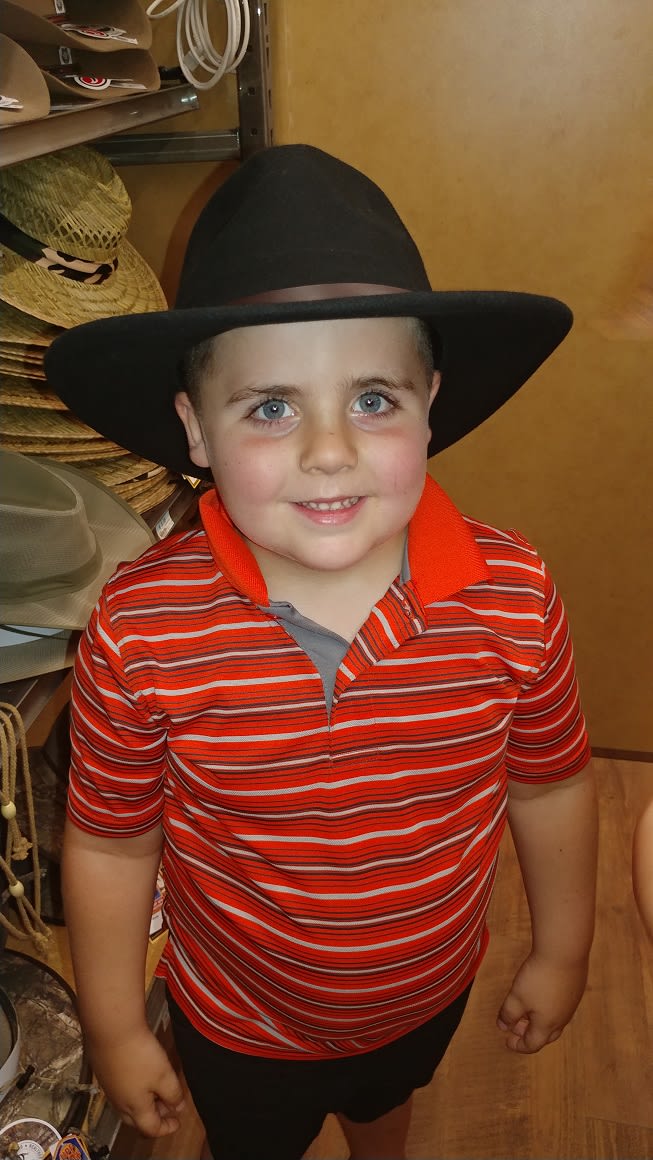Kids aren’t supposed to have aneurysms
Six-year-old boy saved from near-certain death thanks to first procedure of its kind.
Article Date:

Jaydon Hogan doesn’t like to sit still. He is an active six-year-old boy who loves playing outdoors, dressing like a cowboy and playing with toy cars and trucks. Jaydon’s mom says her son doesn’t hold back and isn’t afraid to be the first to experience something new.
Among his notable firsts, Jaydon is the first ever pediatric patient to undergo a procedure using the Pipeline™ Embolization Device for a ruptured aneurysm. Neurosurgeons at Wolfson Children’s Hospital successfully performed the procedure on Jaydon. He was treated by pediatric neurosurgeon Alexandra Beier, DO, University of Florida College of Medicine – Jacksonville, and endovascular neurosurgeon Ricardo Hanel, MD, PhD, with Baptist Medical Center Jacksonville, Wolfson Children’s Hospital and Lyerly Neurosurgery, and who serves as director of the Baptist Neurological Institute.
“When Dr. Hanel told me that Jaydon would be the first pediatric patient to ever have this procedure, I was nervous and scared, but I also knew Jaydon was in the best care possible,” said Stephanie Porter, Jaydon’s mother.
How it all started
The day that Jaydon had the procedure started out as a typical day. He had attended school and enjoyed his usual family routine when he returned home. Porter tucked him into bed that night. A short time later, she heard him coughing and went into his bedroom to check on him. Immediately upon seeing him, Jaydon’s mom knew something was terribly wrong.
“I wanted to make sure he was okay,” Porter said. “But Jaydon was lifeless, and we couldn’t wake him up.”
Porter called 911, and Jaydon was transported to a hospital near his home. After he was examined, a CT scan confirmed Jaydon had bleeding in his brain, a subarachnoid hemorrhage, that was not allowing his spinal fluid to drain properly.
He was taken by helicopter to Wolfson Children’s Hospital and prepped for emergency brain surgery to drain his spinal fluid and then further imaging revealed he had a ruptured aneurysm. This was then treated endovascularly with the Pipeline Embolization Device.
A cerebral aneurysm is a weak or thin spot on a blood vessel in the brain that balloons out and fills with blood. Though brain aneurysms are very rare among children, they can be extremely serious. In Jaydon’s case, he had no family history of aneurysms. His aneurysm developed as a result of an abnormality in the blood vessel wall. The aneurysm was located toward the back of Jaydon’s brain near the brain stem, and it bled. If an aneurysm ruptures and causes bleeding in the brain, it requires immediate medical attention.
“Jaydon was deteriorating quickly due to hydrocephalus (fluid on the brain) that we were able to treat with an external drain,” said Dr. Beier. “He had a ruptured aneurysm that Dr. Hanel was able to treat successfully with the Pipeline procedure. We were very fortunate to have Dr. Hanel on this case. He and his partner, endovascular neurosurgeon Eric Sauvageau, MD, were co-authors and co-investigators on a Pipeline study that was published last year. The study showed the benefit of using the Pipeline device to treat smaller aneurysms.”
The results of the study, presented at the International Stroke Conference in Houston, showed that a cylindrical Pipeline device used to treat large brain aneurysms is just as effective on smaller and sometimes hard-to-reach aneurysms. The Pipeline device is a specialized stent that is implanted in the brain to slow the flow of blood, preventing the aneurysm from growing and allowing it to heal. It is inserted through a microcatheter into an artery in the groin and then threaded through the body to the brain. After the stent is placed, the embolization will naturally shrink the aneurysm over time.
“The Pipeline Embolization Device is a safe and effective way of dealing with brain aneurysms,” Dr. Hanel said. “We have one of the largest experiences in the country with flow diverter devices for pediatric patients. The good thing about the Pipeline device is that once the aneurysm is closed off and treated, the patient is cured, which is very empowering.”
Jaydon spent two-and-a-half weeks on the Pediatric Intensive Care and Neuroscience units at Wolfson Children’s. Six months later, diagnostic imaging confirmed the aneurysm was gone.
“Today, Jaydon is a perfectly fine six-year-old boy and you wouldn’t know that he had experienced this condition,” Porter said. “I am so thankful for Dr. Beier and Dr. Hanel, and for everyone at Wolfson Children’s Hospital."



